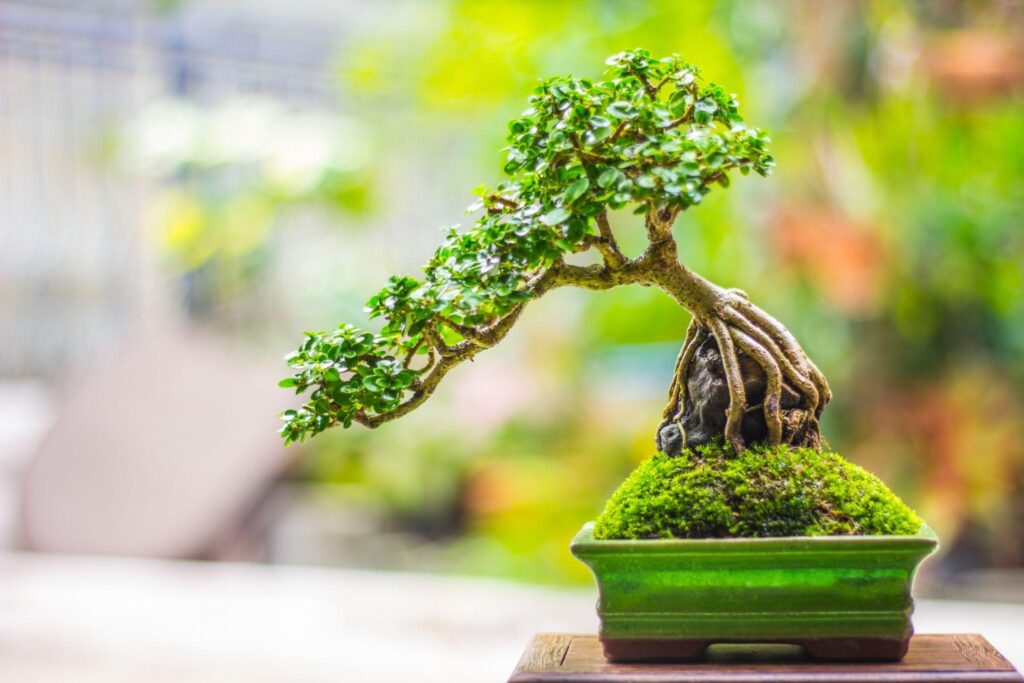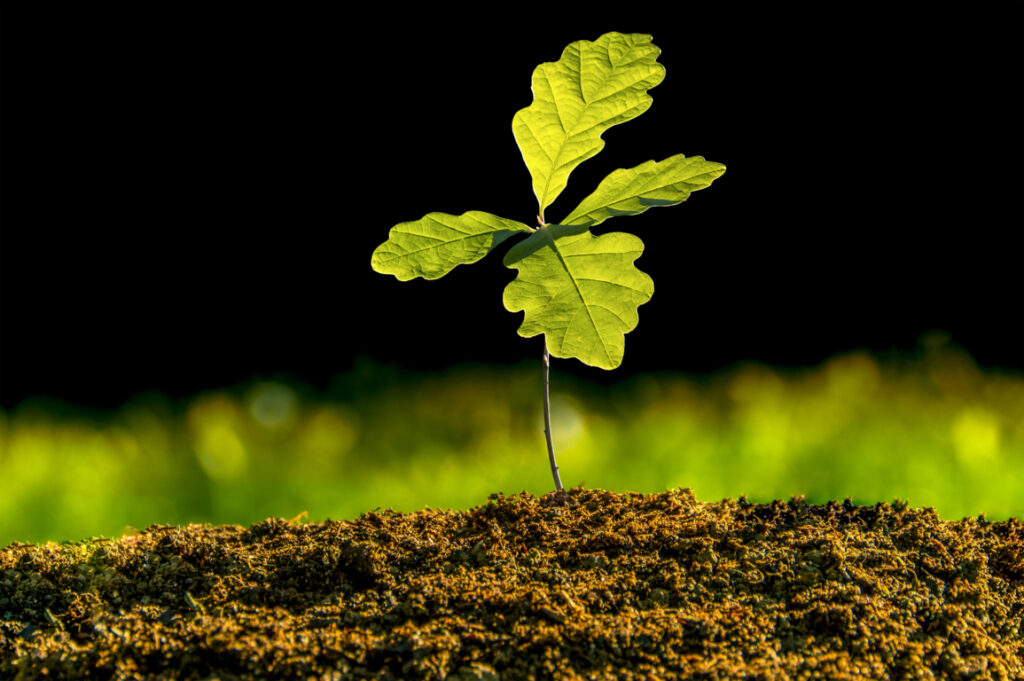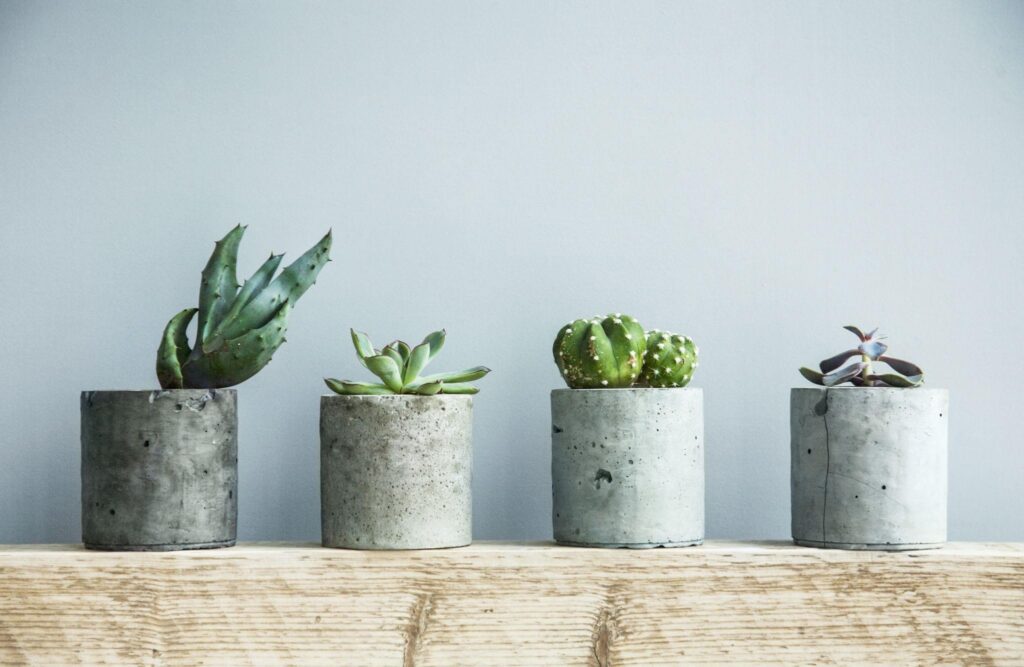
Succulents come in all shapes and sizes. Some of the smallest succulents can stay quite small, while others can grow to be as tall as 3 feet! The size of a succulent is determined by its type, how much sunlight and water it gets, and other environmental factors. For example, some species of cacti naturally stay smaller than others.
If you’re looking for a succulent to keep in a small container or planter, look for varieties such as Crassula and Echeveria that are known to stay petite. If you want something larger and more dramatic, consider types of aloe plants or agaves that can get quite tall over time. Although it’s not recommended since they are slow growers, you can also prune succulents to keep them small.
Let’s get into the details now.
| Succulent | Height | Type |
| 1. Zebra Succulent | 5 – 8 inches | Indoor |
| 2. Split rock succulents | 2 – 5 inches | Indoor |
| 3. Mini Succulents | 2 – inches | Indoor |
| 4. Echeveria succulents | 12 inches | Outdoor |
| 5. Firestorm succulents | 8 inches | Outdoor |
| 6. Wooly rose succulents | 3 – 5 inches | Outdoor |
| 7. Bear Paw Succulents | 11 – 12 inches | Indoor And Outdoor |
| 8. Cactus succulents | 12 – 36 inches | Indoor And Outdoor |
| 9. Ogre ear succulents | 36 – 48 inches | Indoor And Outdoor |
| 10. Flapjack succulents | 12 – 18 inches | Indoor And Outdoor |
| 11. Butterfly succulents | 15 – 20 inches | Indoor And Outdoor |
| 12. Rosette succulents | 3 – 8 inches | Indoor And Outdoor |
| 13. Hen and chick succulents | 6 – 12 inches | Indoor And Outdoor |
| 14. Aloe succulents | 12 – 36 inches | Indoor And Outdoor |
| 15. Teddy bear succulents | 10 – 12 inches | Indoor And Outdoor |
| 16. Living stone succulents | ½ – 1 inch | Indoor And Outdoor |
How Big Do Succulents Get Indoors?

In general, most succulents won’t get very large indoors. They tend to prefer smaller spaces with lots of light. Expect them to grow up to 6 inches tall and 4-12 inches wide. Some varieties may reach up to 12 inches tall or more, such as aloe plants or some Haworthias.
The primary reason indoor succulents are smaller than outdoor succulents is that they don’t get as much light. Without the sun’s energy to power photosynthesis, succulents can’t grow to their full potential size. Additionally, when kept in a pot, roots are confined and can’t stretch out into larger soil surfaces where they can access more nutrients.
Popular Indoor Succulents
If you’re looking to grow an indoor succulent, then consider these:
- Zebra succulents
- Split rock succulents
- Mini succulents
How Big Do Zebra Succulents Get?

Zebra succulents are slow-growing, drought-tolerant plants. They typically grow to about 5 – 8 inches high, with a spread up to 6 inches wide. They prefer bright light and well-draining soil; however, they can tolerate some shade and occasional overwatering. In ideal conditions – when provided with enough water and fertilizer – Zebra succulents can grow to 12-18 inches tall, with up to a 24-inch spread.
How Big Do Split Rock Succulents Get?
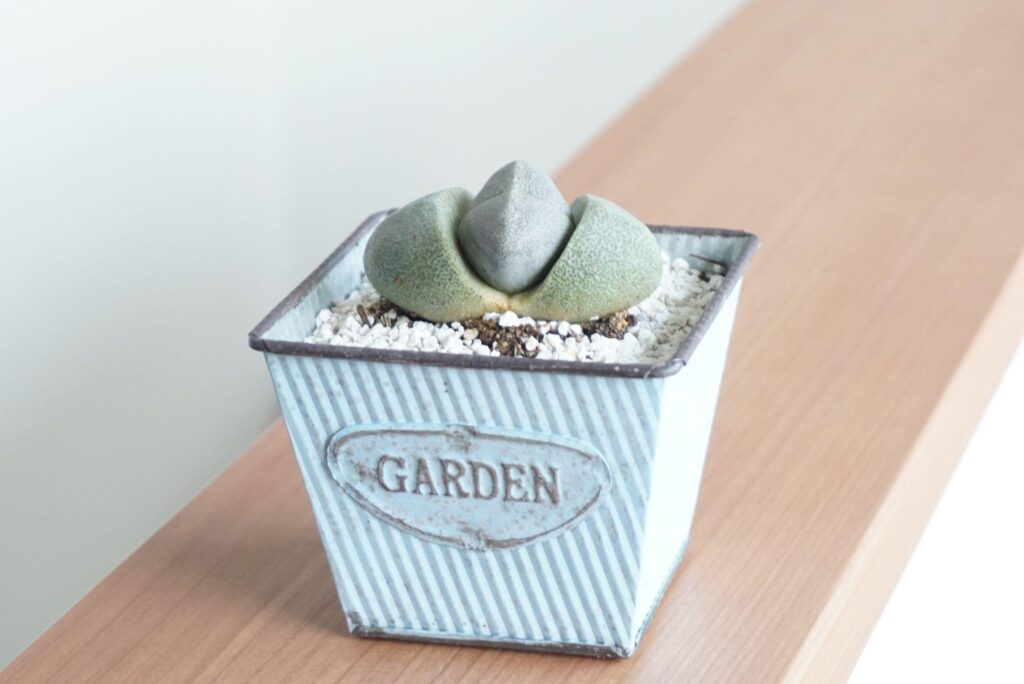
Split rock succulents are slow-growing plants and usually reach a maximum size of 2–5 inches in both height and width. However, with proper care and the right environment, they can occasionally grow bigger than that.
These succulents should be repotted every 2–3 years to ensure that the plant is provided with fresh soil and that its root system is not overcrowded. With adequate space, light, and water, split rock succulents can thrive and reach their full potential size.
How Big Do Mini Succulents Get?

Mini succulents are fairly small and typically range from an inch to around 4 inches tall. The exact size of each plant will depend on the succulent and its growing conditions. Generally, most species stay small, with rosettes reaching only about 4 inches in diameter. However, the smallest varieties may only reach a few centimeters in diameter.
In addition, succulents can produce offsets or “pups” which will continue growing and form clusters over time.
How Big Do Succulents Get Outdoors?

A lot of people wonder how big do succulents get outside. Well, the answer varies.
Outdoor succulents can reach heights of up to 6 feet tall when grown outdoors! An outdoor variety that can get quite tall is the Yucca (up to 30 feet). These types of succulents love direct sunlight and will often flower in the springtime with white or yellow blooms.
If you are looking for a more manageable size, some other varieties of succulents like Aloe, Echeveria, Graptoveria, and Sedum grow well outdoors in containers and remain pretty small. These succulents can add pops of color to rock gardens and other outdoor landscaping ideas.
Popular Outdoor Succulents
These are some of the most popular outdoor succulents:
- Echeveria succulents.
- Firestorm succulents
- Wooly rose succulents.
How Big Do Echeveria Succulents Get?

Echeveria succulents can range in size from a few inches to several feet. Most Echeveria species stay relatively compact, usually not exceeding 12 inches in height and width at maturity. They require minimal care and maintenance, but they need plenty of bright light to keep their vibrant colors and form.
If grown indoors, Echeveria succulents can stay on the smaller side if kept in bright, indirect sunlight. When planted outdoors in a well-draining soil mix and given adequate light, some species of Echeveria can grow to over two feet in diameter.
How Big Do Firestorm Succulents Get?

Firestorm succulents can grow up to around 8 inches tall. They are a low-growing groundcover type of plant, making them perfect for gardeners who want to create a lush and lush-looking landscape in their gardens. Firestorm succulents have thick, fleshy leaves that can tolerate extended periods of drought, making them easy-to-maintain, low-maintenance succulents.
How Big Do Woolly Rose Succulents Get?

Woolly rose succulents can reach between 3 – 5 inches. They are relatively low-growing and compact compared to other succulent varieties. They have thick, fuzzy leaves ranging in color from light green to pinkish-red. The plants also produce small white or yellow flowers during the summer months.
Which Succulents Can Be Grown Both Indoors And Outdoors?
Some succulents can be grown both indoors and outdoors. They are:
- Bear Paw succulents
- Cactus succulents
- Ogre ear succulents
- Flapjack succulents
- Butterfly succulents
- Rosette succulents
- Hen and chick succulents
- Aloe succulents
- Teddy bear succulents
- Living stone succulents
How Big Do Bear Paw Succulents Get?

Bear Paw Succulents, or Cotyledon Tomentosa, are an exciting and unique succulent variety with furry, furry foliage. They can get quite large when planted in the right conditions and given adequate care. They can reach a maximum height of 30 cm when grown in sunny locations and warm climates.
How Big Do Cactus Succulents Get?

Cactus succulents are a diverse group of plants. They can grow up to 36 inches in height. Many cacti are columnar in shape, giving them an overall tall stature without necessarily taking up much space horizontally.
Most species of cactus succulents range from 12 – 36 inches in height.
How Big Do Ogre Ear Succulents Get?

Ogre ear succulents, scientifically known as Dipteracanthus prostratus, are a type of low-growing evergreen shrub with uniquely shaped leaves. The plant typically grows between 36 – 48 inches in height. The plant leaves have a waxy texture and vary in color from dark green to reddish-purple.
The edges of the leaves are sharply serrated, which gives them an ogre-ear-like appearance. They can also develop yellow and white flowers when grown in ideal conditions.
How Big Do Flapjack Succulents Get?

Flapjack succulents can get quite large in size, depending on the variety and growing conditions. The giants of the group, such as Kalanchoe thyrsiflora, can reach up to 30 inches in height. Other varieties are much smaller, with rosettes only a few inches wide.
Generally speaking, most flapjack succulents remain in the 12 – 18 inch range, which makes them ideal for containers and indoor growing. In addition to their size, these plants also feature thick, paddle-like leaves with jagged edges – hence the name “flapjack”.
How Big Do Butterfly Succulents Get?
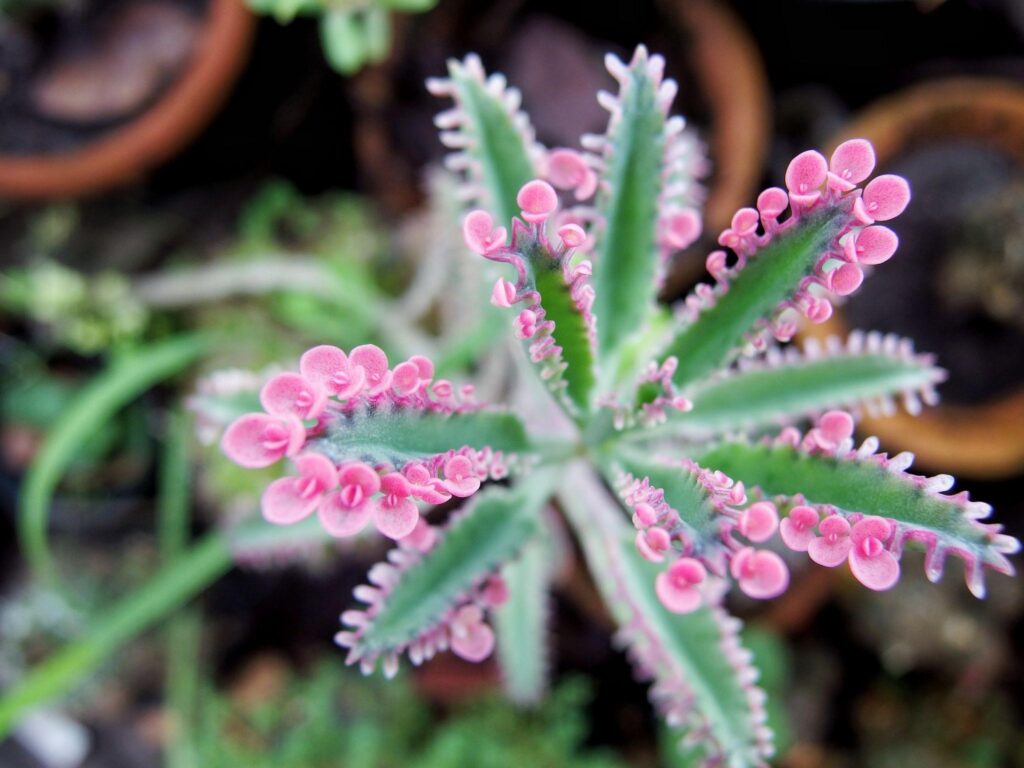
Butterfly succulents can grow between 40-50 cm in height, depending on the variety. Some varieties can even reach up to 60 cm in height when planted outdoors. The leaves of butterfly succulents are typically green, but may also be tinged with other colors, such as purple, pink or yellow. These plants should be watered regularly and kept in a location that receives plenty of sunlight for optimal growth.
How Big Do Rosette Succulents Get?

Rosette succulents come in a wide range of sizes, from small plants that are only a few inches tall to large plants that can reach up to 3 – 8 inches or more. The size of the rosette succulent will depend on the species and variety, as well as growing conditions, such as soil quality and availability of water and light.
They prefer bright light with some shade throughout the day and should be watered thoroughly when the soil is dry.
How Big Do Hen And Chick Succulents Get?

Hen and chick succulents typically grow to a height of 6 – 12 inches, with some occasional varieties reaching up to 12 inches in height. The rosettes of hen and chick succulent plants vary in size from 1/2 inch to 4 inches in diameter. They spread quickly, creating mounds ranging from 12-18 inches in diameter.
The roots of hen and chick succulents may spread up to 3 feet away from the original rosette, making them good choices for groundcover in a rock garden or a more prominent planter.
How Big Do Aloe Succulents Get?

Aloe succulents are a bit bigger compared to other varieties. They can easily grow to a height between 1 to 3 feet. It is also important to note that some aloe varieties can become top-heavy, so it is best to anchor them with a stake or trellis to help keep them upright.
Furthermore, aloe succulents may form multiple stems and branches that can produce a wide spread of plants in larger pots or outdoors.
Pruning is generally recommended when necessary to ensure healthy growth and prevent overcrowding.
How Big Do Teddy Bear Succulents Get?

Teddy bear succulents are easy-to-care-for plants, which usually grow to an average size of 10 – 12 inches in height. They can spread out a bit more when grown in larger containers or when allowed to cascade over the side of a pot. However, due to their slow growth rate, they rarely become unmanageable in size.
It’s best to re-pot them every couple of years to ensure they remain healthy and strong when they begin to outgrow their space.
How Big Do Living Stone Succulents Get?

Living stone succulents can get anywhere from 1/2 inch to 1 inch in height. They tend to stay fairly small, which makes them easier to care for.
The living stones have an unusual appearance due to their flat, round leaves that resemble stones or pebbles. These succulents are native to South Africa and can tolerate arid conditions. They require little water and can survive in full sun or partial shade.
These plants can go dormant during drought or cold temperatures and re-sprout when the conditions become more favorable. Living stone succulents are also known for their long-lasting blooms that bloom from late winter to early spring.
These succulents are an excellent choice for container gardening due to their slow growth and small size, as well as their ability to tolerate drought and cold temperatures.
How Big Do Succulents Get If Planted In The Ground?
Generally, the size of a succulent is determined by its genetics, how much light it receives, how often it is watered, and the type of soil it is planted in. In ideal growing conditions, some succulents can reach sizes of up to 6 feet tall and 4 feet wide. While the bigger varieties can easily grow up to 10 feet tall when planted in the ground.
What Factors Affect The Growth Of A Succulent?
Climate
Succulents grow best in dry climates with abundant sunlight, as too much humidity can cause root rot and other diseases.
Soil
Succulent plants require excellent drainage to prevent the roots from rotting, so well-drained soil is essential for good growth.
Water
Overwatering can be fatal for succulents, so water only when the soil is completely dry. Allow the plant to dry out between waterings and avoid wetting the leaves.
Fertiliser
Succulents don’t require much fertilizer, as over-fertilizing can cause root burn and other problems. A diluted, balanced fertilizer can be applied twice a year during the growing season.
Pruning
Pruning regularly will help control the size of your succulent and also encourage new growth. Remove dead or damaged leaves and stems as needed to keep them looking healthy.
Pot Size
Smaller pots limit the growth of succulents and keep them in check, while larger pots can permit them to reach their full size. Consider pot size when selecting a succulent variety.
Species
Depending on the type of succulent you have, some can grow quite large while others stay small and compact. Be sure to research the variety you are growing to get an idea of its mature size.
Age
As with any living thing, succulents will continue to grow as they age, so the size of your plant can be affected by how long it has been in your care. Generally speaking, older plants will be larger than younger ones.
By understanding the various factors that can influence a succulent’s growth, you can better manage its size and ensure it stays healthy.
Conclusion
In conclusion, succulents can range in size from small to large and even gigantic. The smallest succulent species measure only a few centimeters tall, while the largest can reach up to 5 feet or more. Depending on their particular environment and care, succulents can be either tiny and delicate or big and bold!
We hope our guide for how big do succulents get will help you pick the right type of succulent for your home or garden. With the right environment and care, you can enjoy these unique plants’ vibrant colors and fascinating forms!


